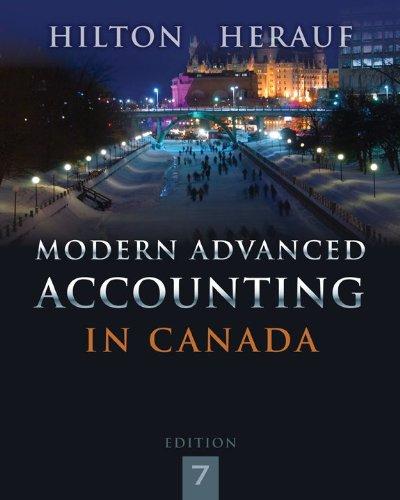On January 2, Year 1, Poplar Ltd. purchased 80% of the outstanding shares of Spruce Ltd. for
Question:
.png)
Additional Information
€¢ The Year 4 net incomes of the two companies are as follows:
Poplar Ltd......... $1,100,000
Spruce Ltd. ......... 521,500
€¢ The mineral rights owned by Spruce have increased in value since the date of acquisition and were worth $925,000 at December 31, Year 4.
€¢ On January 2, Year 2, Spruce sold equipment to Poplar for $500,000. The equipment had a carrying amount of $400,000 at the time of the sale. The remaining useful life of the equipment was five years.
€¢ The Year 4 opening inventories of Poplar contained $500,000 of merchandise purchased from Spruce during Year 3. Spruce had recorded a gross profit of $200,000 on this merchandise.
€¢ During Year 4, Spruce€™s sales to Poplar totalled $1,000,000. These sales were made at a gross profit rate of 40%.
€¢ Poplar€™s ending inventory contains $300,000 of merchandise purchased from Spruce.
€¢ Other expenses include depreciation expense and copyright amortization expense.
€¢ On January 2, Year 2, Poplar issued 8%, 7-year bonds with a face value of $500,000 for $514,000. Interest is paid annually on December 31. On January 2,
Year 4, Spruce purchased one-half of this issue on the open market at a cost of $242,500. Intercompany bond gains (losses) are to be allocated between the two affiliates.
€¢ Tax allocation will be at a rate of 40%.
Required:
(a) Prepare the following consolidated financial statements:
(i) Income statement
(ii) Retained earnings statement
(iii) Balance sheet
(b) Calculate the December 31, Year 4, balance in the account €œInvestment in Spruce€ if Poplar had used the equity method to account for its investment.
(c) Explain how the recognition of gains on the elimination of intercompany bond holdings is consistent with the principle of recording gains only when they are realized.
The ending inventory is the amount of inventory that a business is required to present on its balance sheet. It can be calculated using the ending inventory formula Ending Inventory Formula =... Balance Sheet
Balance sheet is a statement of the financial position of a business that list all the assets, liabilities, and owner’s equity and shareholder’s equity at a particular point of time. A balance sheet is also called as a “statement of financial... Face Value
Face value is a financial term used to describe the nominal or dollar value of a security, as stated by its issuer. For stocks, the face value is the original cost of the stock, as listed on the certificate. For bonds, it is the amount paid to the...
Step by Step Answer:

Modern Advanced Accounting In Canada
ISBN: 9781259066481
7th Edition
Authors: Hilton Murray, Herauf Darrell





